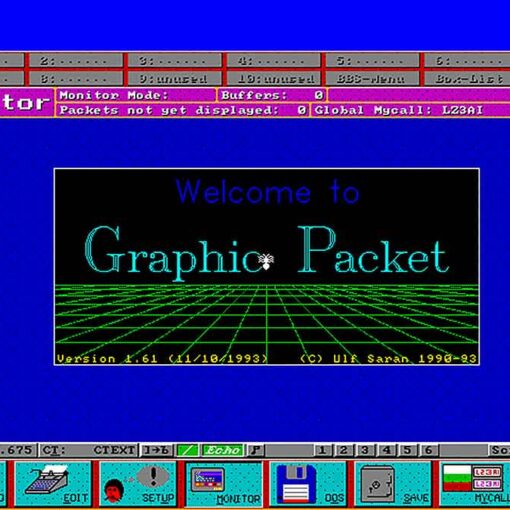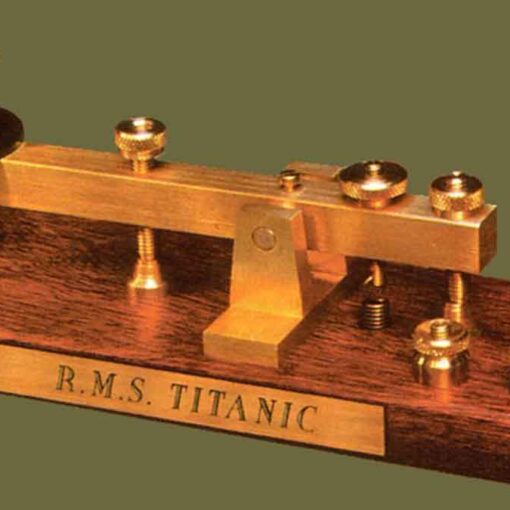
Sooner or later there is a chance that you will be bitten by the “DX-scab”, if you haven’t already. Then you will inevitably encounter the pailappa.
The pile is a crowd of stations that must be satisfied quickly and consistently. It probably comes from the English “pile-up” – an accumulation of many similar things in one place or a mass collision of vehicles. But in this case the build-up is of many ham stations trying to QSO with some rare (DX).
Simplex paylap
Both the DX station and the caller are on the same frequency.
The main merit of this method is that it saves frequency spectrum (only one frequency is used).
This is an inefficient method of operation when many stations are calling. But depending on the understanding of the DX operator, a lot can mean even five stations. Under such circumstances the rate of QSOs will be relatively low.
Often what starts out as a simplex pileup eventually evolves into a spread-frequency pileup.
Pile of scattered frequencies
Most QSOs are made with both stations transmitting on exactly the same frequency.
When a station encounters ever-increasing paylap, link speeds drop most often for one of the following reasons:
- interference from many stations on top of each other;
- the caller is having trouble receiving the DX station because some (many) of them are calling at times when the DX station is transmitting;
- More and more stations are not hearing or following the instructions given by the DX station.
In order for the caller to hear the DX station, its operator shifts the pailapa – he listens on a different frequency than the one on which he is transmitting (usually 5 kHz or more). The result is that the calling stations no longer interfere with the DX station’s transmission because they are now on a separate frequency.
But the problem remains that the DX station still has to listen to a single paylap frequency to “pick up” the stations one by one.
To increase his chances in this activity, the DX operator scatters the paylap by starting to listen in a certain frequency segment, for example “5 to 10 up”.
This method, of course, uses a larger frequency spectrum than is strictly necessary. Spreading should be limited to as small a segment as possible to leave room for other stations as well.
Needless to say, for the sake of other users of the spectrum (those not intending to operate the DX station), it is recommended that the spread frequency method be used only when the pileup has grown too large to be contained by the simplex method.
How to behave in a paylap?
Never call the DX station if you are not confident enough to receive it.
Check that your station is correctly tuned before calling.
Do not tune your transmitter to the frequency on which the DX station is transmitting.
Is your antenna pointing in the right direction?
Did you hear the instructions on the DX station. If not, wait to hear them first.
Listen.
Listen.
Listen and adjust to the rhythm of the DX station.
If you hear disgruntled hams making comments on the DX station frequency, stay calm and wait for the chaos to die down.
Only if all these requirements are met can you call the DX station!
Simplex Telephony Paylap
How do you join a simplex paylap?
Never call before the previous QSO has completed. This means: wait in line.
The right moment is the key to success. Don’t start shouting right away, rather wait a few moments until the frequency noise dies down a bit, your chance is better at that point. This is not a race where you have to be the first, the fastest caller! The important thing is to call at the right time. Wait a few seconds for the most excited callers to stop and the QRM to quiet down and then make your call. This can be a few seconds (5, even 7 seconds).
How should you call? Never transmit the initial of the DX station you are calling; The DX station obviously knows its own initial. Submit your full call sign only once. Only part of the call sign is a bad approach. Not “zulu zulu zulu”, but “golf three zulu zulu zulu”. Transmitting only part of the initial creates confusion and lengthens the entire procedure.
Yes, you will hear many stations give only part of their initial. This is not only bad practice, it is also illegal.
Don’t talk too fast or too slow, act normal (don’t shout).
For phonetic pronunciation (spelling) use only the international phonetic alphabet. No fantasies!
In radio traffic, the phonetic alphabet (Alpha to Zulu) recommended by the ITUtexting) aims to avoid errors in the transmission of letters and words. To achieve this goal, each letter of the alphabet is assigned a unique word. Note that the phonetic alphabet is unique and does not exist separately for each language!
The DX station listens for these unique words in the cacophony of the pailappa. The operator’s ears are tormented by the chaotic appearance of these words (and numbers), which leads to rapid fatigue. If you use other than the standard spelling words, the procedure may be less effective because the DX station does not expect to hear such words.
Quite often in pailapi you may hear that the DX station has missed the very letter that deviates from the standard phonetic alphabet, and as a result asks for a repeat. Example: Spelling the word “Lima” sounds like it was cut with a knife. We often hear “London” as an alternative. If your signal is very weak or there is interference, the DX station will probably pick up “Lima” but not “London”!
The DX station not only expects to hear exact words, but also expects the corresponding sound of those words and the corresponding number of syllables. If individual sounds have been lost due to QRN or QRM, the operator often reconstructs the word by sound and/or number of syllables.
Use only the correct English pronunciation of the spelling word. Appendix … describes the phonetic pronunciation of each of these words. Note that you may have a different pronunciation in your language other than English.
The DX station has often only accepted part of your initial and says
“2ZZZ 59 for you QSL?”.
This means: the station whose call sign ends in “2ZZZ for you 59, did you accept?”
In your answer, you should emphasize the missing part of the initial: “This is _golf tu, _golf tu zulu zulu zulu 59 QSL?” (the _ sign means a slightly longer pause).
Normally the DX station should end with “LZ2ZZZ thank you” to confirm that they have accepted your initial and end the connection. If it does not confirm the correction of your initial, call the station again and ask: lplease confirm my initial, LZ2ZZZ over”. Be sure to verify this confirmation to avoid a mistyped initial. If it does not confirm your initial, there is no reason not to call again until you hear the DX station say your initial correctly.
If the DX station received your initial in error, repeat that part of the initial where the error is several times. Example: he says “LZ2ZZW 59”, answer him:
“Here’s LZ2ZZZ zulu zulu zulu LZ2ZZZ 59 over”.
Normally it will end with “LZ2ZZZ thanks” or something similar. Be careful and make sure the fix is confirmed as described above.
When the DX station calls a part of a call sign that is not in yours, or calls another call sign, keep quiet and listen. If you continue to call him, one of the following scenarios is very likely to follow:
- The DX station notices that you are not following the instructions given, and you are blacklisted, meaning that station will not work with you for the next (many) minutes due to your bad behavior (the DX station would like to work with you , but does not accept to be intentionally or unintentionally disturbed by you!).
- Alternatively, the DX station may respond and give you an RS report “00” identifying you as a trespasser and this is shown to you.
If you continue to call while the DX station is trying to work with another station, you are only causing interference to that station and delaying the whole process. Not only will this station suffer from your interference, but ultimately, if nothing else, you will too.
If the DX station says “1ABS only, 59 for you, over”, this is an indication that there are problems with undisciplined stations calling it while in QSO with another station.
Listen carefully for the DX operator calling specific geographic areas. “Japan only” means that all stations from countries other than Japan should refrain from calling it. Keep quiet unless you are in Japan.
If he calls by digits from the initial (which often corresponds to the division by area): “only listening for six” means that only stations that have a 6 in their initial are invited to call him. The rest: wait, keep quiet.
If you are a low power (QRP) station, do not call “LZ2ZZZ fractional line QRP”. The DX station has enough problems with the paylap, no need to burden it with additional “fractional line QRP” ballast. Also, keep in mind that in many countries, the use of “fractional dash QRP” after the suffix is illegal.
When the DX station responds with a report (“LZ2ZZZ 59”), acknowledge briefly, report “thanks, also 59” (or “59 thanks”) and nothing more. There are many other stations waiting to make a QSO.
CW Simplex Paylap
The general rules and procedures explained above are obviously applicable to CW contacts as well.
Never call with “DE LZ2ZZZ”. The word DE is a waste and contains noneinformation. The letters DE can be the first two letters of a German call sign and lead to confusion.
Never transmit your initial with a “K” at the end (K as an invitation to transmit). This can cause confusion. If you transmit a K after your initial (perhaps after too little of a pause), the DX station may think it is the last letter of your initial. So, no “K”.
Listen to the paylap to gauge what speed you should use per transmission. What stations does the DX station work with – slower ones or faster ones? Do not try at a higher speed than the DX operator can accept… Above this limit is unproductive.
On the CW, the “KN” at the end of the show means “for you only”. When a DX station transmits “…W1Z? KN” (or “W1Z KN”), she only wants to hear stations whose initials contain the characters W1Z. Everyone else has to wait.
If a DX station transmits: “CQ NA” or “QRZ NA”, it means it is only looking for stations from North America (NA = North America, SA = South America, AF = Africa, ASC or OC = Pacific/Oceania, EU = Europe, JA = Japan, USA = United States). So follow the instructions.
Pile of scattered telephony frequencies
If too many stations are calling on the DX station’s frequency, the DX station will have to switch the paylap to spread frequencies, allowing it to increase the rate of QSOs. How is this done? What do you need to know and do to be among the first to call the DX station in the multi-frequency paylap?
Start by listening, then listen some more!
There are a few things you should know before you start calling:
- Where is the DX listening? Whether it listens only on one frequency or in a certain frequency range.
- Does he listen without restriction or
- … for certain parts of the world?
- … by the numbers from the initials?
- How does he mark where he listens? For example, he says “up”, “down”, “5 up”, “10 down”, “between 200 and 210”, etc.
A good DX operator reports the frequency he is listening on after each QSO; don’t expect this to always happen, however. If the paylap is very large, the DX operator may decide to increase the speed of the QSOs (eg saving one second from each contact) by not telling the crowd after each QSO where he is listening. Not a good practice because it makes newcomers nervous. In addition, they often hear the DX station making many QSOs without giving their initial.
Make sure you understand exactly the range in which the DX station can hear you.
If he mentions a specific area he’s listening to and you’re not in that area, take a break, have a drink and listen!
Maybe he listens by numbers. If the number it mentions is not present in your initial, don’t worry…
If it specifies “listening from 14200 to 14225”, it’s almost like playing roulette unless you know exactly where it’s listening. So keep listening to find the exact frequency on which stations he works. Most DX stations move slightly up and down this range. But some jump like kangaroos. Generally speaking, your best chance of catching the DX station is to call slightly above or below the frequency on which it was operating with the last station.
Try to learn as much as you can about how a DX station works. Is he a kangaroo or does he move smoothly? The more you learn about his style of operation, the more likely you are to catch him quickly.
Try to learn the rhythm and habits of the DX station. A good DX operator uses a consistent pattern of QSOs. Remember the last words he says before he transitions to acceptance (usually either his initial or “thank you” or “l5 up” etc.).
Before starting any transmission, make sure all controls on your station are set correctly. Is your transceiver in spread mode and is the transmit frequency correctly set? Double check!
If you have determined where he made his last QSO, adapt your strategy to his habits, transmit your initial only once and listen.
If it does not appear in the next 1-2 seconds, call again on the same frequency. Repeat this process until you hear someone reply (hopefully you!).
If it answers on another station, stop yelling and start looking for where that station is broadcasting. It’s a bit like a game of cat and mouse, except there’s one big cat and lots of little mice, one of which is you, but…
Unfortunately, you will always hear stations that continue to transmit their initials indefinitely, even when the DX station is working with someone. It often seems to you that this is the way the majority of stations operate. In fact, by doing so, these stations cause QRM and make work slower than it would be with a little more discipline. They quickly build an enviable reputation. This final output is guaranteed for stations that stand and call outlong time. He is also a clear example of how not to act.
It is possible for the DX operator to mark them as bad operators, and respond to such endless attackers with an RS “00” report. Let’s hope they understand what that means…
Spread CW frequency stack
In general, the rules and procedures described for multifrequency telephony operation, as well as for CW simplex, remain valid.
How does a DX station indicate that it is working on scattered frequencies? At the end of each contact, it transmits for example: “UP”, “DWN”, “UP 5”, “DWN 10”, “QSX 3515”, “UP 10/20”. A simple “UR” or “DWN” usually means that the DX station will listen 1 to 2 kHz up or down from the frequency it is transmitting on.
It would be ideal if you were able to transmit and listen at the same time, which we can liken to full break operation (also called QSK). At full break we can listen between the TI and SHE transmissions. This means that we will hear the DX station the moment it starts transmitting. However, not all transmitters (and output stages) are designed for QSK mode. You can also work on a semi-break (slow break), where the instrumentation switches from transmission to reception and vice versa in the spaces between words or even between letters. The delay time is usually adjustable to suit everyone’s preferences. Full break is an unmistakable advantage when calling in a spread-frequency paylap. It can shield us from any transmission at times when the DX station is on the air. We want to hear what DX is broadcasting though.



